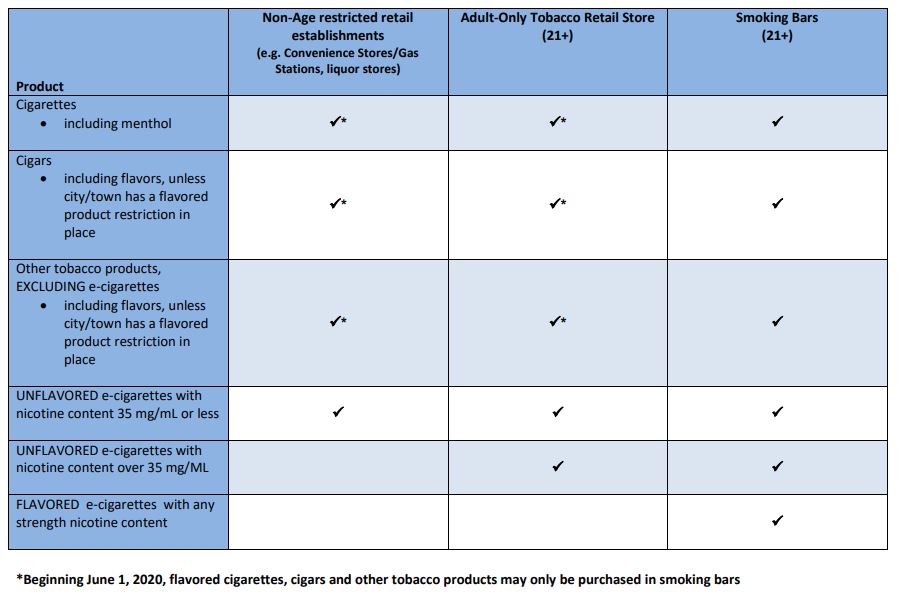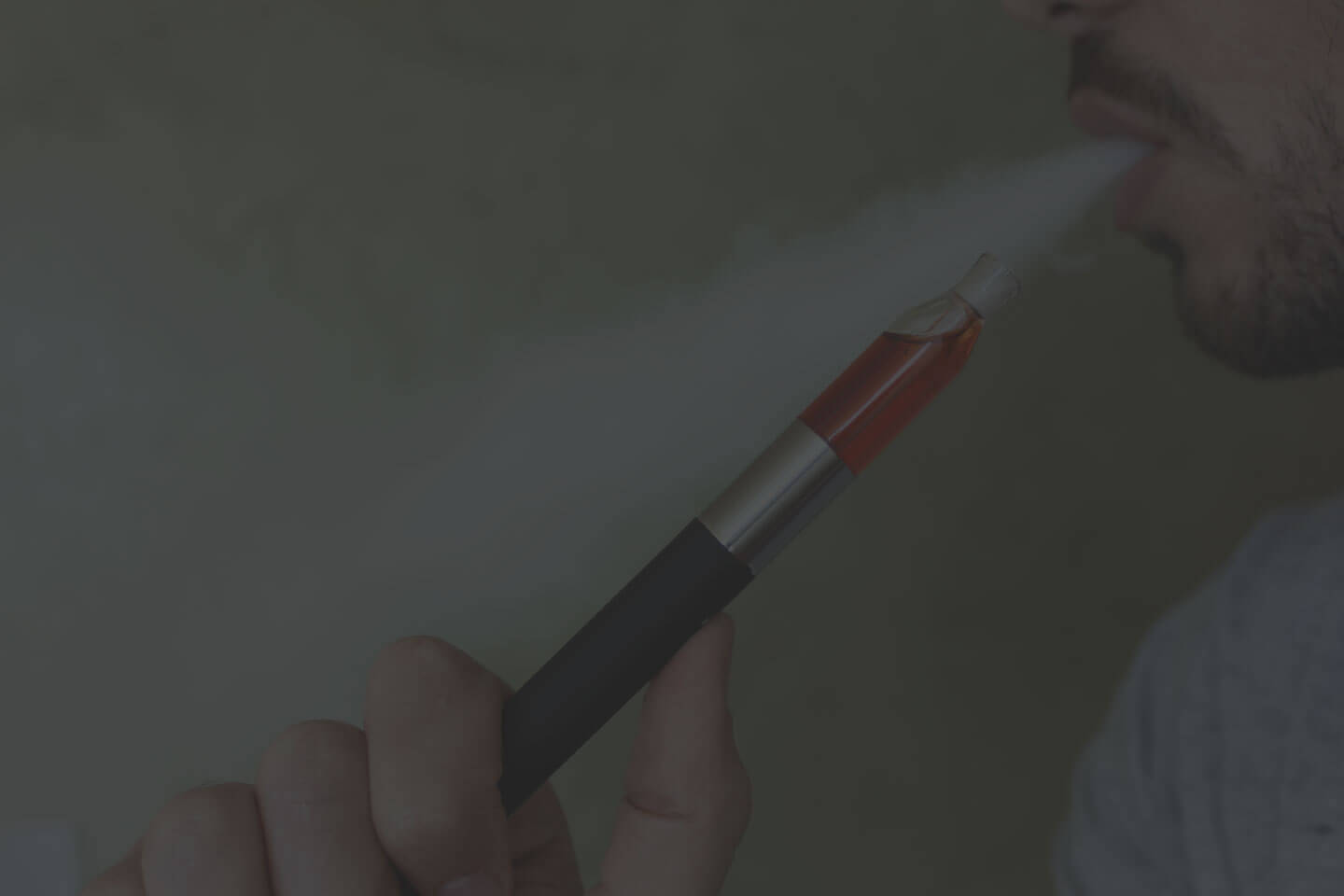In April 2019, the first cases of e-cigarette, or vaping, product use-associated lung injury (EVALI) were identified in Illinois and Wisconsin. Patients mainly reported having respiratory symptoms, including chest pain, coughing, and shortness of breath. Gastrointestinal symptoms such as nausea and stomach pain, as well as some constitutional symptoms, including weight loss and fever have also been reported as EVALI symptoms by the Centers for Disease Control and Prevention.
This article discusses the EVALI outbreak, the state and national vaping bans that have followed, and it includes an infographic that highlights the myths surrounding the issue.
EVALI Outbreak
As hospitalizations due to the lung illness started to increase across the country, the CDC and the U.S. Food and Drug Administration began to investigate.



They found that most cases were linked to vitamin E acetate, an additive, and the counterfeit brand Dank Vapes.
Illegal and counterfeit vape products available online and via informal sources (i.e. friends, family and street dealers) are not subject to the safety standards upheld by licensed cannabis producers. These products are largely untested and may contain harmful chemicals like pesticides or thickening agents.
State and National Vape Bans
Since the EVALI outbreak, several states have passed regulations in an effort to better protect consumers, for example:
- Banning the sale of flavored e-cigarette and vaping liquids (New York)
- Banning the sale of e-cigarette products to minors
- Banning the sale of e-cigarette products by retailers located near schools or other youth-centered facilities
- Prohibiting the use of e-cigarette products in spaces where smoking is prohibited and enclosed public areas
The Massachusetts vape ban enacted on September 24, 2019 was the first in the country to prohibit the sale of all vaping products, including nicotine and cannabis products. The blanket ban was originally set to be in place for four months but was lifted on December 11, 2019, and replaced with the 2019 Tobacco Control Law. The new law places restrictions on where nicotine vaping products, flavored vaping products, and tobacco products can be sold:



The Massachusetts Cannabis Control Commission also issued an amended quarantine order permitting the sale of cannabis vaporizers used to vaporize flower, or that are used to vaporize concentrate but do not contain usable marijuana, as well as regulated vaporizer products manufactured from January 2, 2020 onwards that have passed screenings for contaminants such as vitamin E acetate.
A national ban on flavored cartridge-based e-cigarettes (excluding tobacco or menthol) was announced by the FDA on January 2, 2020. Unfortunately, the blanket vape bans don’t specifically target the unregulated vape black market, which is why being informed about the illness is critical. The infographic below discusses the myths that have been floating around the internet and social media, presenting facts from verified sources that you can consult if you’d like to dig even deeper into the issue.



VAPING BANS AND ILLNESSES: MYTHS VS. FACTS FAQ
In 2019, the CDC issued a warning to e-cigarette users about an outbreak of lung injuries associated with both fake THC vape products and nicotine products. Nicknamed EVALI (e-cigarette or vaping product use-associated lung injury), this unfortunate outbreak has brought the risks of using unregulated cannabis products to the forefront.
Although cannabis has been targeted as being at the center of the vaping epidemic, several vaping products and substances have been identified in cases of injury and death. In fact, as of October 15, 2019, only 34% of patients with symptoms of EVALI reported exclusive use of THC-containing products.
After investigating the cases, the CDC found that the additive vitamin E acetate was the common denominator and stated that it is “strongly linked to the EVALI outbreak.” This synthetic form of vitamin E is commonly used by illicit producers as a thickening agent to dilute concentrates, often leaving very little THC.
Although no single device, ingredient, or additive has been identified as the culprit, the Centers for Disease Control and Prevention (CDC) has identified vitamin E acetates as a “chemical of concern” in biologic samples for patients with lung injuries related to vaping use. Other diluting agents and additives have also been identified in samples from patients with vaping-related respiratory illnesses.
National and state findings suggest products from informal sources like friends, family or online dealers “are linked to most of the cases and play a major role in the outbreak,” according to the CDC. EVALI patients are more than nine times as likely to get their vaping product from a dealer, off the street, or from a friend.
Interviews with patients with severe lung injuries related to vaping revealed that the danger is in fact illegal, unlicensed, and unregulated THC vaping products.
Making it more important than ever for cannabis consumers to be aware of the risks so they can avoid using counterfeit THC vape products altogether.
Rather than focusing on the emerging root of the vaping epidemic (e.g., black market products), some policymakers are advocating for a total ban on all vaporizer products. However, this type of blanket ban may only make matters worse by causing more consumers to use potentially dangerous products.
Follow these five steps to ensure that you are buying quality THC vaping products:
- Buy from a dispensary that is licensed to do business in a state where cannabis products are legal.
- Look for signs of fake packaging — check for missing labels, spelling and grammatical mistakes.
- Check the liquid. If it is the consistency of a thin oil or water, it’s likely been tampered with or lacks purity.
- Research the brand. If there isn’t information about it, there is a reason.
- Look for lab test results. Any legal vape cart sold at a dispensary is required to have a label showing the total amount of THC. Some dispensaries also provide total terpenes, cannabinoids, as well as a statement letting consumers know that no Vitamin E acetate was found.




